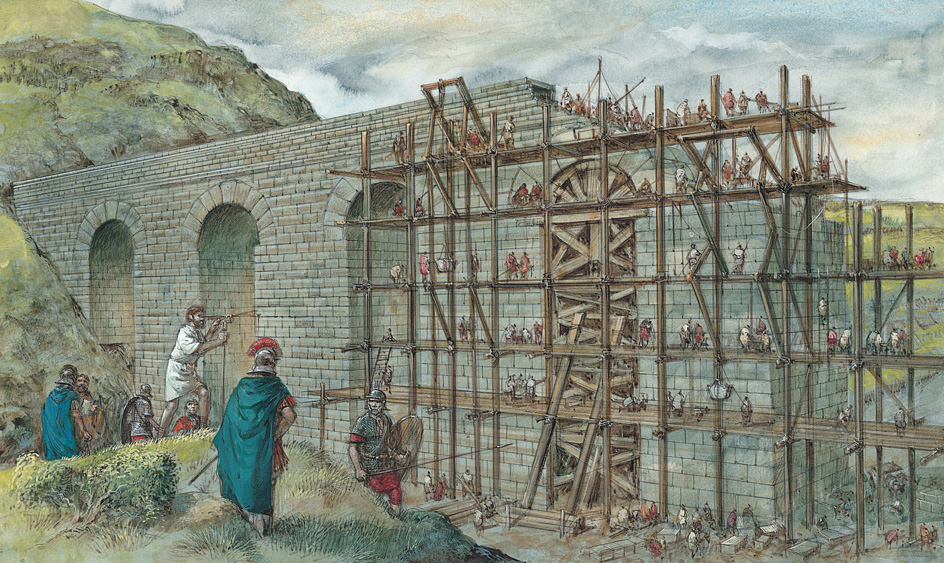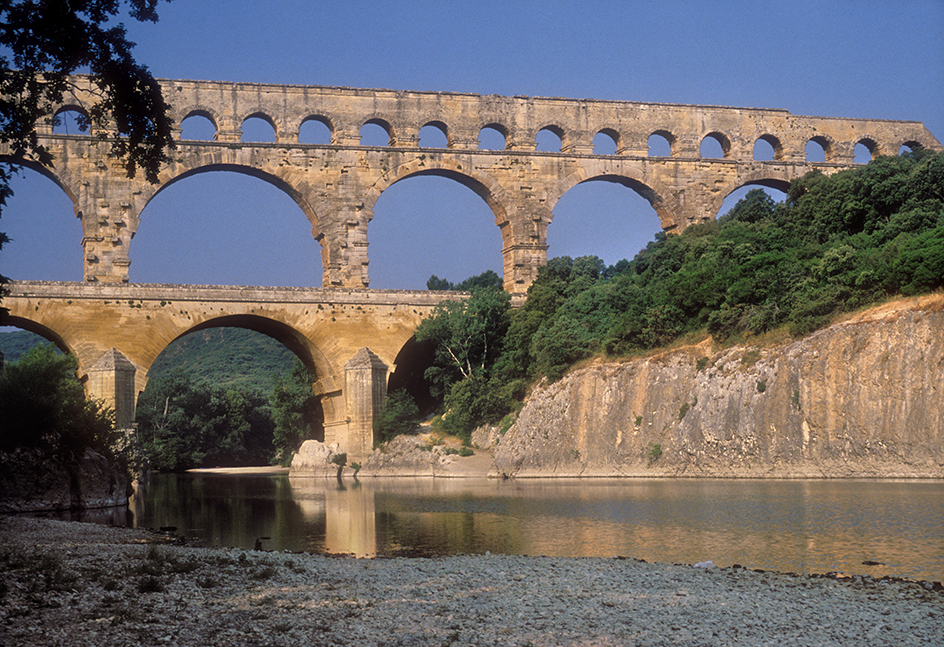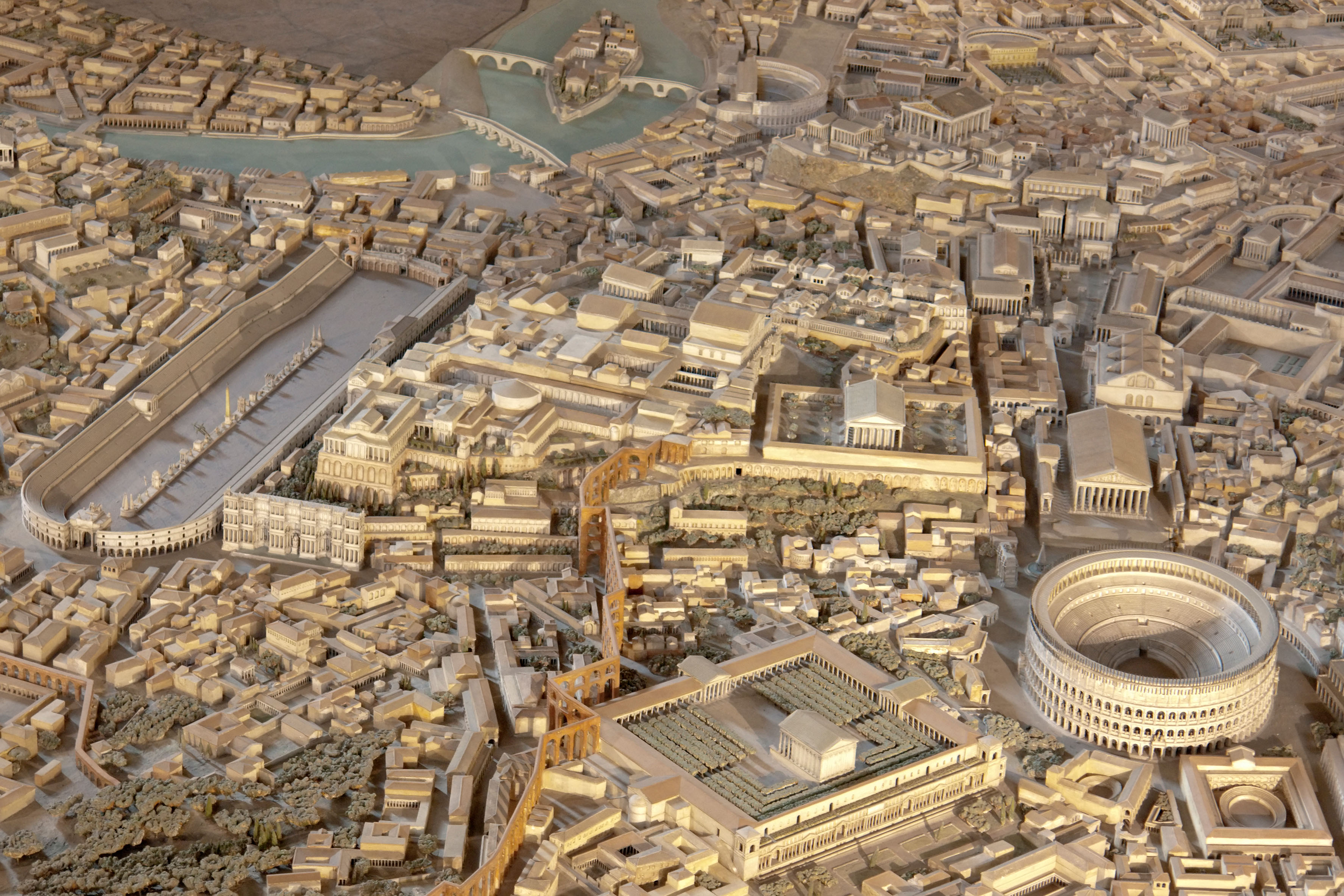Aqueduct, << AK wuh duhkt, >> is an artificial channel through which water is conducted to the place where it is used. The materials used for aqueduct construction may be masonry, concrete, cast iron, steel, or wood. Some aqueducts are tunnels dug through rocks, and others are canals in the earth. In many aqueducts, the outlet is so much lower than the water source that gravity alone carries the water. Where gravity is insufficient, the water is forced through the aqueduct by pumps.

As cities and industries grow, they require more water, and more aqueducts must be built. Such modern conveniences as commercial air conditioners require large quantities of water. Aqueducts also supply water to dry lands that must be irrigated to produce crops.
Ancient aqueducts.
It is not known when or where the first aqueducts were built. In ancient times, Jerusalem used a leaky aqueduct made of a series of limestone blocks in which 15-inch (38-centimeter) holes had been drilled by hand. The Greeks built masonry conduits to bring water to their cities, and even bored tunnels by hand. One of these tunnels, 4,200 feet (1,280 meters) long, was built by Athens 2,500 years ago. Most aqueducts of ancient times were built of stone, brick, or pozzuolana, a mixture of limestone and volcanic dust.


The city of Rome had many aqueducts and was the only ancient city reasonably supplied with water. The first person in charge of the Roman waterworks was Marcus Agrippa, who was appointed water commissioner in 33 B.C. By A.D. 97, nine aqueducts brought about 85 million gallons (322 million liters) of water a day from mountain springs. Later, five additional aqueducts were built. About 200 cities in the Roman colonies had aqueducts. One famous Roman aqueduct, the Pont du Gard, still stands across a river near Nimes, France.
Later aqueducts.
Only a few new aqueducts were built until the Middle Ages. Late in the 1500’s, an aqueduct was built for the English town of Plymouth by Sir Francis Drake, then mayor. It was called the River Leet, and was an open channel 24 miles (39 kilometers) long. London had no aqueduct until 1609 when the aqueduct called New River was built, bringing water 38 miles (61 kilometers) to London.
Present-day aqueducts.
Costly bridges to carry water across rivers and valleys are no longer necessary. They have been replaced by pipe through which water is carried across hilly country. Sections of pipe called inverted siphons curve downward to pass beneath streams and other low places in the aqueduct’s course.
One of the first great modern aqueducts was the first Croton Aqueduct, built by New York City in 1842. It was made of masonry lined with brick. Iron pipes carried water across the Harlem River over a bridge. During the late 1800’s, other cities, especially those of Britain, built large aqueducts. These cities included Birmingham, Glasgow, Liverpool, and Manchester.
Many of the world’s greatest aqueducts were built in the early 1900’s. The Catskill Aqueduct, completed in 1913 for New York City, extends 120 miles (193 kilometers). The Colorado Aqueduct, in southern California, was completed in 1939. It carries water through 29 tunnels across the desert from the Colorado River.
In 1973, a 685-mile (1,102-kilometer) aqueduct was completed in California. Other noted aqueducts in the United States include the Hetch-Hetchy (O’Shaughnessy), which supplies San Francisco, and those of Denver, Boston, and Tulsa. One of the most noted aqueducts is the Apulian Aqueduct of southern Italy. Other major aqueducts include those of Winnipeg, Canada, and Rio de Janeiro, Brazil.
